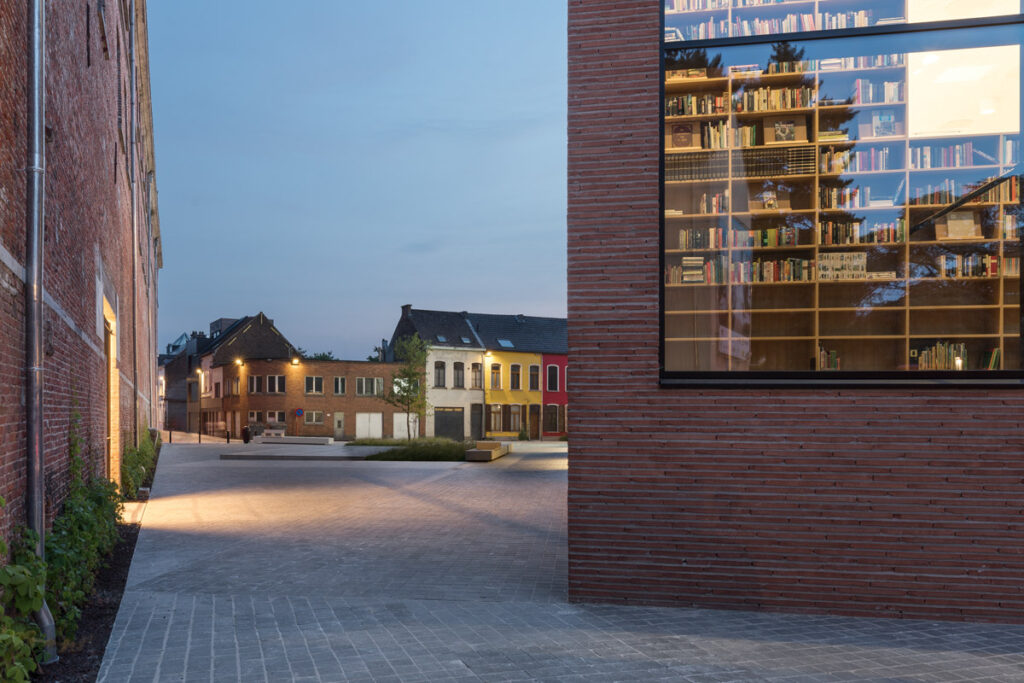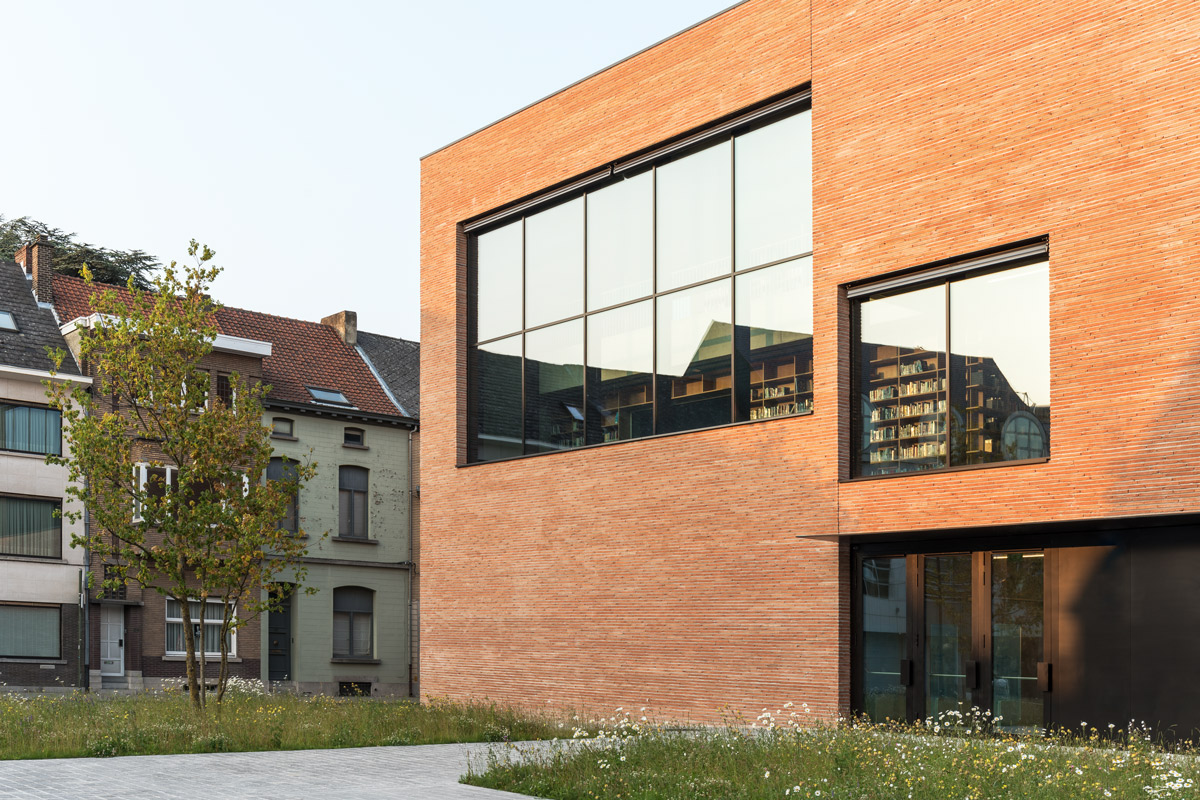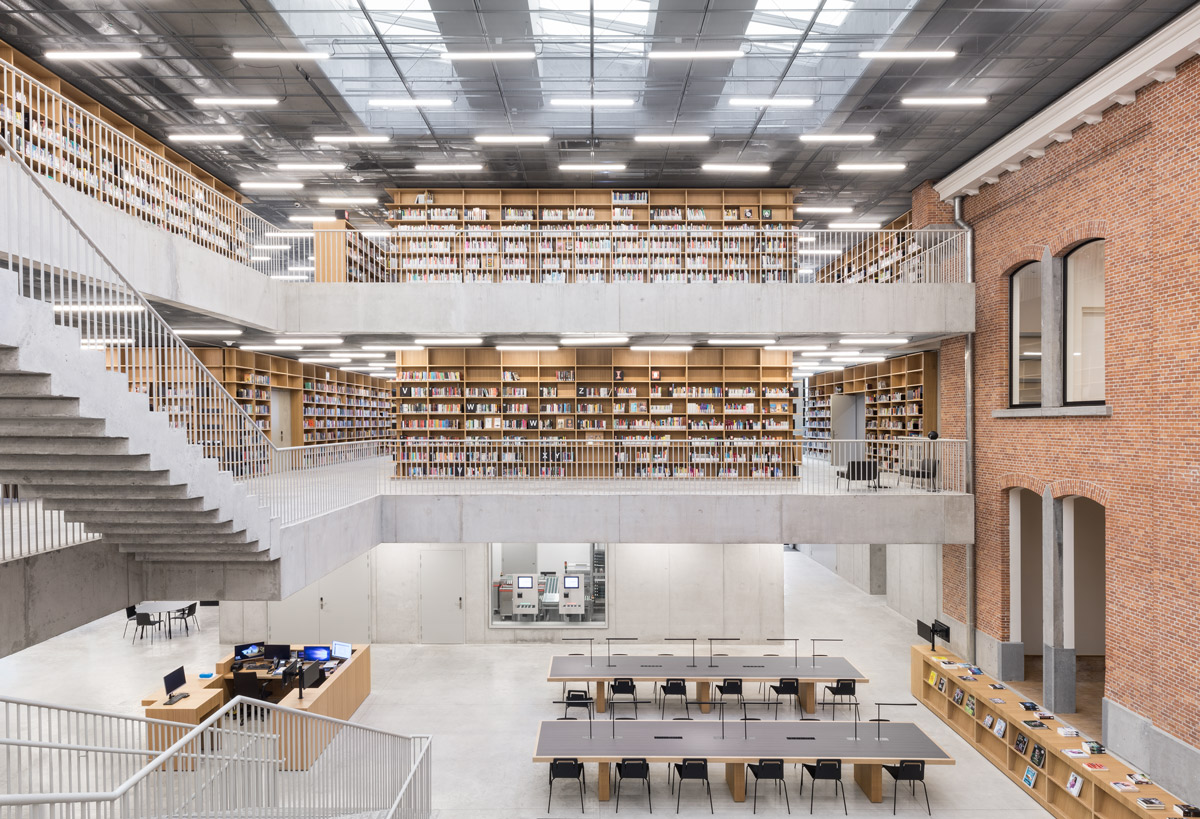
Utopia / KAAN Architecten
The Belgian city of Aalst, known for its splendid gothic buildings and the oldest belfry tower of the Flanders, UNESCO World Heritage, can boast about a new 8,000 sqm brick structure, designed by the Dutch firm KAAN Architecten to host Utopia, the new Library and Academy for Performing Arts.
With its name inspired by Thomas More’s famous novel Utopia – printed for the first time in 1516 in the city of Aalst – its concept plays with the homophone English term, derived from Greek, eutopia which means ideal place. An ideal project, that has been slotted into the urban fabric to enhance the spaces of the city center, which provides the city with three new public squares. Tall and wide windows provide a close visual connection between the city and the interiors.
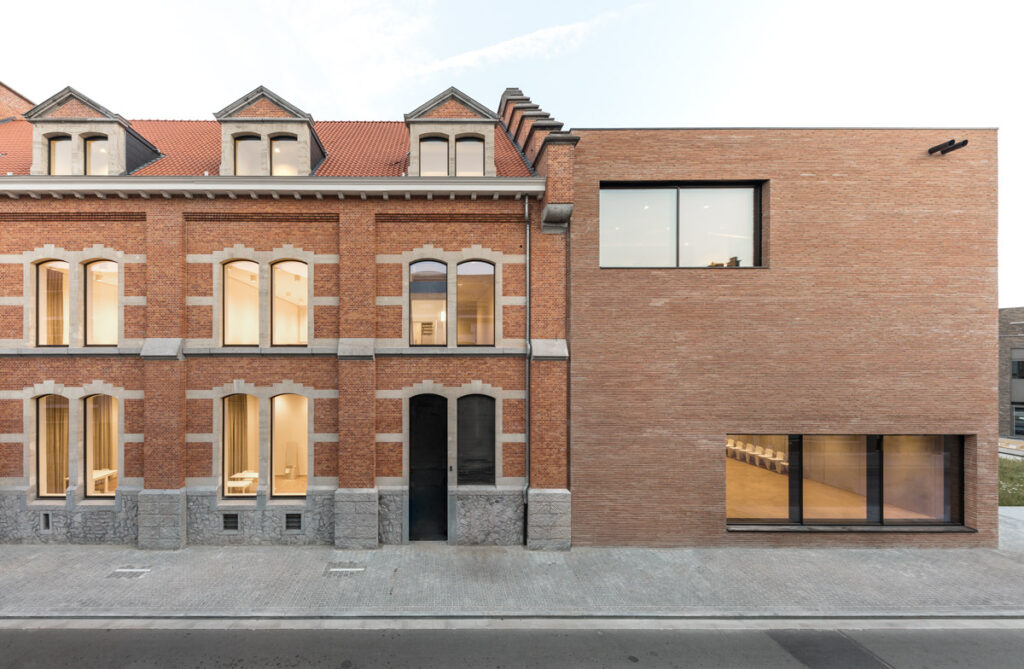
Moreover, after having studied the predominant colors of the city center, the architects chose a dark brick, called Red Aalst, for the façade cladding, which establishes a dialogue with the context, while in order to accentuate the new building’s identity they have positioned horizontally the long flat bricks to contrast with the vertically-oriented bricks of the old school façades. The 19th century building, which housed the Pupillenschool, the old military school, has been embedded into the new design and is now the cornerstone of the new building. The historic façades blend perfectly with the generous new spaces both outside and inside, where the ancient brickwork establishes an elegant material and chromatic dialogue with the modern wooden furniture and the light gray concrete elements.
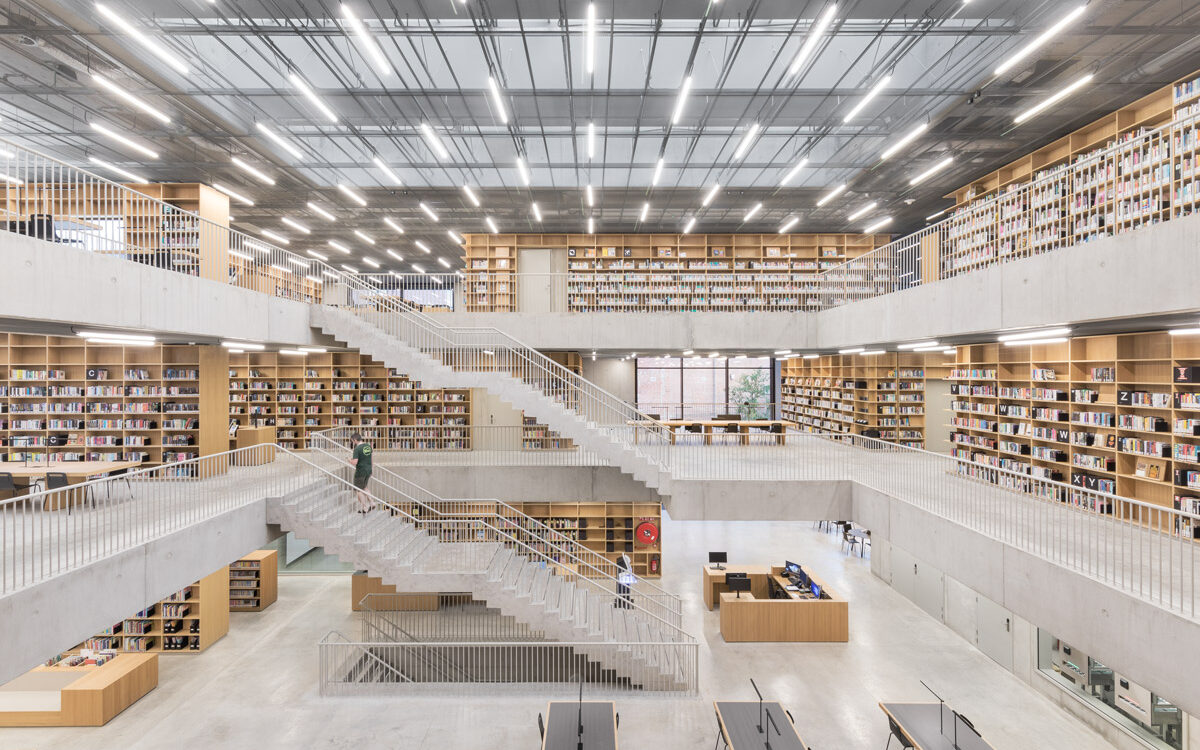
Beyond the main entrance of the new Aalst’s Utopia Library and Academy for Performing Arts, located between the reading café and the auditorium, moving through the wide hall, the magnificent interior landscape unfolds from floor to ceiling. The different levels, featuring bookshelves and reading tables, look into the atrium and towards the brick façade of the pre-existing building. The bookcases, pushed up against concrete structural elements, allow the floors to cantilever out without extra support, appearing to float in the space. Here the place of honor is occupied by an 11.50 m high bookcase filled with all the books donated by the residents of Aalst.
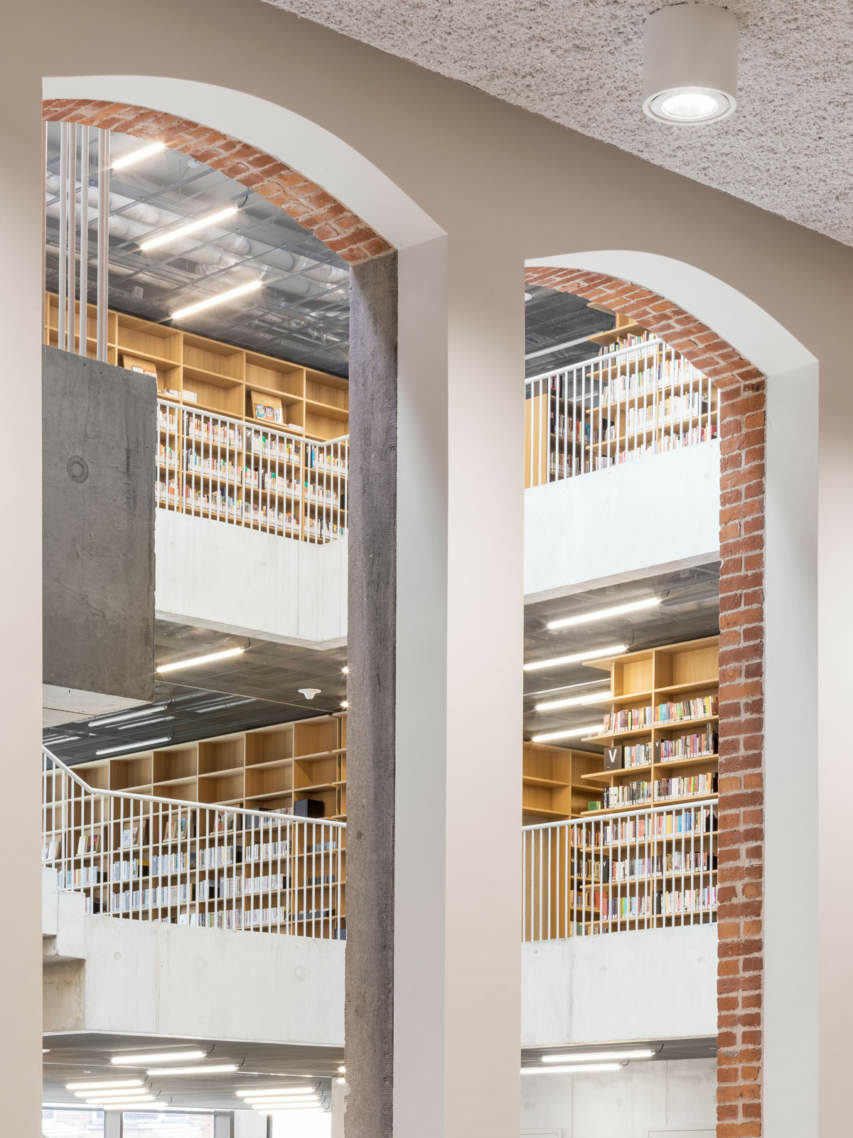
Mimicking the treads, the stairs zig-zag upwards, giving the staircase a sculptural presence at the periphery of the magnificent atrium and reading room. Apart from the ground floor auditorium, the Academy for Performing Arts is housed on the first two floors, flanking the reading atrium. The ballet room, rehearsal studios and teaching spaces have floor-to-ceiling windows that provide a view onto the city and a glimpse inwards from the city. To achieve an excellent level of acoustics, the original wooden floors have been replaced by suspended new concrete floors and the doors turned into sound barriers, while the double glazed windows act as filters for the musical notes.

The designers of firm KAAN Architecten took great care also of the sustainable aspect: materials and labor were locally sourced and low-energy machines were used for the construction, the building features solar panels, geothermal heat and LED lighting, rainwater is recovered and buffered and 230,000 bricks were chipped away and reused. All this allowed the project to achieve the Excellent rating of the BREEAM certification.
